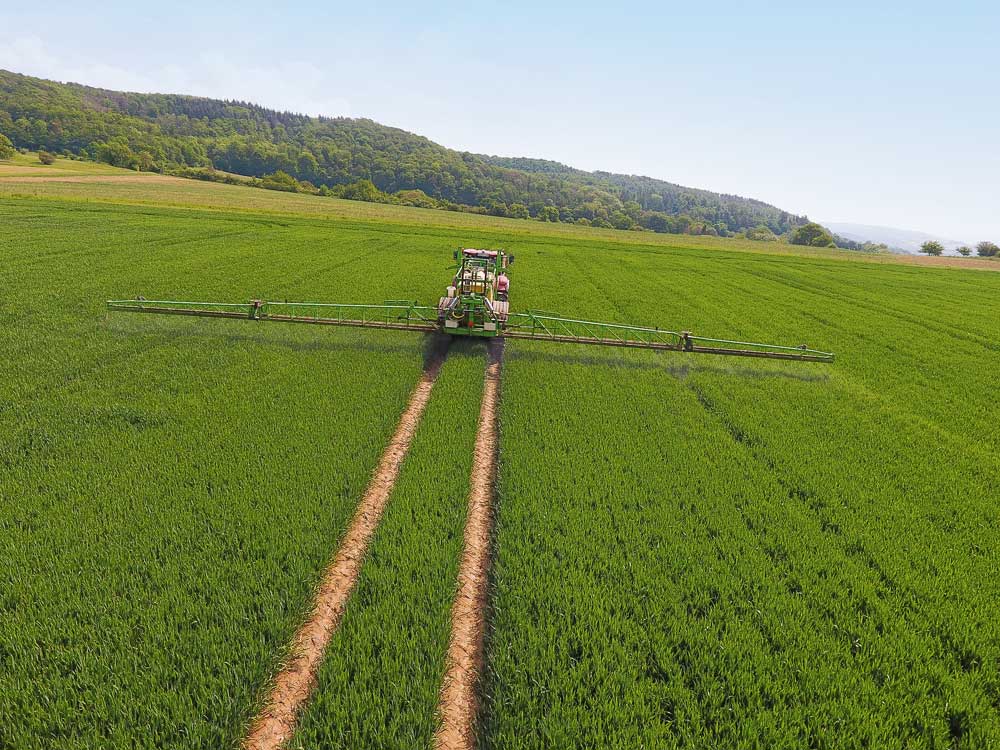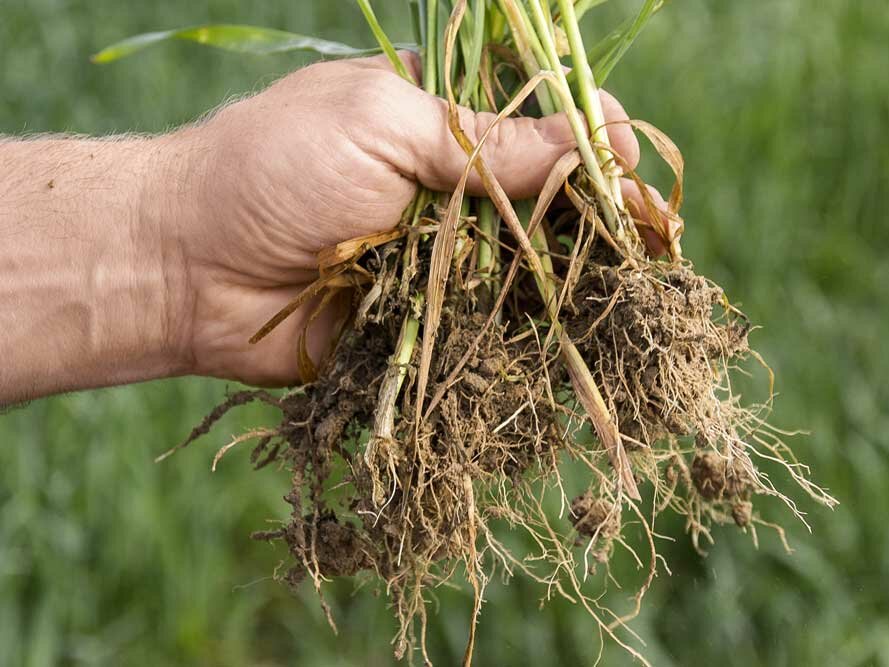Biologicals: What the perspectives are
By Oliver Zapka, Head of Research and Development, Hanse-Agro
There are high political and social demands on agriculture. In addition, there are the economic problems, such as those triggered by the war in Ukraine or the recent removal of subsidies. The increasing effects of climate change are also making secure agricultural production more difficult. However, these growing challenges also offer opportunities for innovation. The role that biologicals can play in this remains to be seen in the coming years. This is because the sometimes fantastic positive yield effects in the area of special crops, in greenhouse cultivation or in tropical and subtropical climate zones cannot be directly transferred to our temperate climate zone and certainly not to the open field. The promises of large yield increases or savings in other production resources such as fertilizer or plant protection should therefore be critically questioned.
What are biologicals?
Biologicals are generally intended to promote growth, nutrient appropriation and the resistance of crops to stress factors and plant diseases. The term includes "biological plant protection products", i.e. plant protection products of natural origin. This group includes bioidentically produced substances, fungi, bacteria, viruses, pheromones and also inorganic substances of natural origin such as minerals. There are also plant biostimulants, which consist of natural or synthetic substances and microorganisms. They are in turn divided into microbial and non-microbial biostimulants. So far, Azotobacter, Rhizobium and Azospirillum species and mycorrhizal fungi have been approved as microbial biostimulants.
Differences between biostimulants and chemical pesticides
Chemical plant protection products are primarily intended to control pests, diseases and weeds and are therefore effective against biotic factors. In contrast, when biostimulants are applied to plants or the soil, they aim to improve growth and yield formation by strengthening natural defense mechanisms and increasing tolerance to abiotic stress factors such as drought, herbicide stress, salt stress or temperature fluctuations.
In contrast to chemical plant protection products, which can have negative effects on the environment and non-target organisms, especially if used incorrectly, biostimulants are generally more environmentally friendly. However, they can in no way be a substitute for chemical pesticides. Their use in agriculture should rather be seen as a supplement in order to achieve optimum yields with strengthened plants.
Inconsistent product names for biologicals
The market for biologicals, which has grown considerably in recent years, is already difficult to understand when it comes to terminology. The large number of different designations, some of which are used for the same products, but also for fundamentally different products, creates considerable confusion. For example, the previous approval process allowed for many names and designations for different products and usually does not require any proof of efficacy, as is necessary for plant protection products, for example. The route of national approval and mutual recognition between EU countries was often used here.
In recent years, however, the legal classification of biostimulants has developed significantly. The EU Fertilizer Products Regulation (EU) 2019/1009 defined biostimulants as an independent product group for the first time. In addition to the product function categories (PFC) for fertilizers (PFC 1), lime fertilizers (PFC 2), soil conditioners (PFC 3), growing media (PFC 4) and inhibitors (PFC 5), there are now plant biostimulants (PFC 6) and fertilizer product mixtures (PFC 7).
For all fertilizer products in the EU, and thus also for the new PFC of plant biostimulants, it is a basic requirement that they are sufficiently effective and pose no threat to the health of humans, animals or plants. They must also not pose a risk to safety or the environment. It is also important to mention that products may not be classified as two different PFCs, even if the transitions are sometimes fluid.
CE marking for fertilizer products
The regulation came into force on July 16, 2022, and its introduction also changed the requirements. The CE marking for fertilizer products was introduced for the first time for agricultural inputs. The previously known system of fertilizer types was abolished and replaced by a new system for placing fertilizer products on the market. These changes required a rethink on the part of farmers, retailers and producers. The following information must be provided for CE marking in accordance with the EU Fertilizer Regulation:
- Physical form
- Date of manufacture and expiry date
- Method(s) of application
- Effect for each target plant
- Any relevant instructions relating to the efficacy of the product, including soil management practices, chemical fertilization, incompatibility with plant protection products, recommended spray nozzle size, recommended spray pressure and other drift mitigation measures.
External and independent conformity assessment bodies are required to check the criteria for CE certification. Various bodies in Europe are accredited for this purpose. A list of these bodies can be found in the EU Commission's NANDO database.
The Julius Kühn Institute (JKI) has set up its own conformity assessment body for Germany. However, products that have already been approved by other means in the past can still be marketed as plant additives, organic fertilizers or soil improvers in the future. However, it is probably only a matter of time before these products are voluntarily CE-certified. As a certain degree of certainty of effectiveness and therefore a quality statement is associated with this.
The different groups of biostimulants:
- Inorganic substances consist primarily of mineral substances or chemical elements. A variety of effects are possible, depending on the starting material. For example, signaling effects, phytohormonal effects or strengthening of stress tolerance.
- Humic acids are macromolecules that are formed naturally during the decomposition of organic material. They are often found in humus soils, peat and lignite. They can exert phytohormone-like effects and improve nutrient uptake.
- Fulvic acids are a group of organic acids and are formed during the decomposition of plant material. They are similar to humic substances, but have a more acidic character. They can have phytohormone-like effects on plants . They can also bind nutrients in the soil and make them available to plants.
- Amino acids and peptides serve the plant as building blocks for complex formation. They are often obtained from plant proteins.
- Algae preparations consist of extracts or crushed algae of various species. These preparations can improve plant growth and stress resistance. They contain a variety of nutrients, vitamins and plant hormones.
- Plant preparations are extracts of special ingredients from parts of plants. These include vitamins and phytohormones and may improve plant growth and nutrient uptake.
- Microorganisms in the form of naturally occurring bacteria and fungi that can promote plant growth. Examples include rhizobacteria, other free-living nitrogen-fixing bacteria and mycorrhizal fungi, which can form symbiotic relationships with plants and improve their nutrient uptake.
- Chitosan is produced by processing the chitin-containing residues of crustacean processing or obtained directly from some fungi and can trigger various signaling effects.
Mode of action of biostimulants
The starting point is a natural, but to a large extent not yet fully researched process in higher plants, namely the reaction to stress and the resulting "hardening" or "stress priming" against the recurrence of such stress. It works as follows: When a plant is exposed to an abiotic stress, it reacts with a stress response (osmotic/oxidative stress). Cell constituents and free radicals are released. These lead to cell damage, but also have a signaling effect for the plant. If the stress is not too great, the plant's signaling pathways are activated and it adapts to the stress. The type of stress adaptation can vary greatly and ranges from increased root/shoot growth to the formation of protective substances and radical detoxification. If the abiotic stress is only moderate, stress priming can occur and if the stress recurs, the plant can react with a faster stress adaptation. When biostimulants are applied to a non-stressed plant, ideally under growing conditions, the signaling pathways are activated and stress priming occurs in this way.
It is very important to note that a corresponding stress adaptation is only possible with an adequate supply of micronutrients. For example, the micronutrients Fe, Zn, Mn and Cu are essential for radical detoxification. Many other stress adaptations are also based on enzymes that require certain micronutrients as cofactors. It should also be noted that biostimulants are generally not able to cure damage that has occurred.
Microbial and non-microbial biostimulants
For microbial biostimulants, it is particularly important to find suitable living conditions during the colonization phase. For products that act via the soil or the plant root, conditions should be present that allow unimpaired root growth. As a result, non-microbial biostimulants appear to be somewhat more flexible in their application. However, here too, the application conditions have a much greater influence on the possible effect than is the case with many synthetic chemical plant protection products! The appropriate products must therefore be applied in good time before the stress occurs. The effect to be expected from a biostimulant application can therefore only ever be a stress priming of the plant for future abiotic stress or a general improvement in resistance, growth promotion and higher nutrient appropriation. Accordingly, the application must take place as early as possible before the effect of a potential abiotic stressor. In the literature and in trials carried out by BAT Agrar, there were indications that varieties react differently to the various products. In these trials, effects were also found in maize rather than in winter wheat.
Conclusion
Biostimulants are currently not a direct alternative to other inputs. However, they are a potential supplement and an important component of integrated crop protection. The effectiveness of biostimulants depends on many different factors, including site characteristics, tillage, crop rotation, crop, variety and the respective annual weather conditions. These factors can also be so strong in their influence that they override a positive effect. It is therefore often difficult to statistically verify the effectiveness of biostimulants in field trials. We would like to encourage you to carry out your own trials and discuss your results with us. Despite many challenges, biostimulants have great potential to improve sustainability and productivity in agriculture.
Classical exact experiments with biostimulants are problematic
One of the main problems is the variability of environmental conditions. Particularly when biostimulants are intended to protect against abiotic stress, not only the time of application but also the future stress level must be appropriate. If the stress level is too high, no effect can be expected. It is also possible that no corresponding stress occurs and the possible effect then fails to materialize.
The exact effect of the substances used on the target plants is often not known in detail. It is also difficult to measure the specific effects of biostimulants in the field, as they do not act directly against pests or diseases. In recent years, Hanse-Agro has tested various biostimulants in winter wheat, maize and winter oilseed rape in exact trials. These include products such as humic acid, amino acid and fulvic acid. Various agents with N-fixing bacteria were also tested.
The results vary from year to year and often a difference in yield cannot be statistically verified. On the one hand, possible effects are sometimes strongly attenuated or overlaid by a sufficient supply of nutrients and water as well as a minor influence of other potential stress factors. On the other hand, in some cases the stress events occurring during critical growth phases are simply too high.
In the case of microbial biostimulants, there are also indications that there is transfer between the plots, despite broader intermediate pathways. A different approach to conducting the trials is needed here. Hanse-Agro is therefore supplementing the exact trials in small plots with larger plots on on-farm areas. We will continue to pursue this approach over the next few years in order to collect further trial results on biostimulants. We are also in contact with manufacturers, state institutes, farmers and other trial providers working with biostimulants. We believe it is extremely important to work together on the further development and improvement of biostimulant trials.





